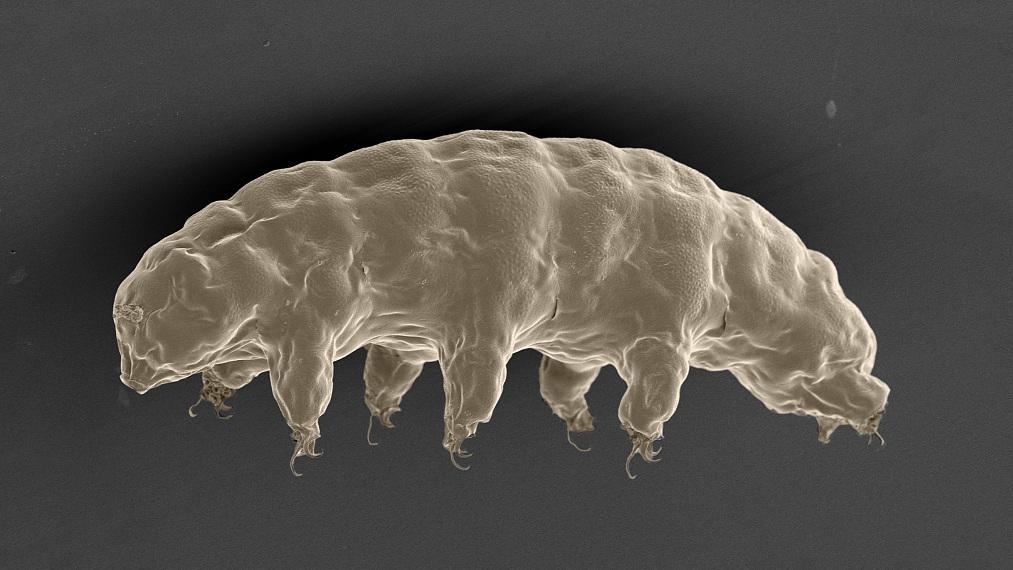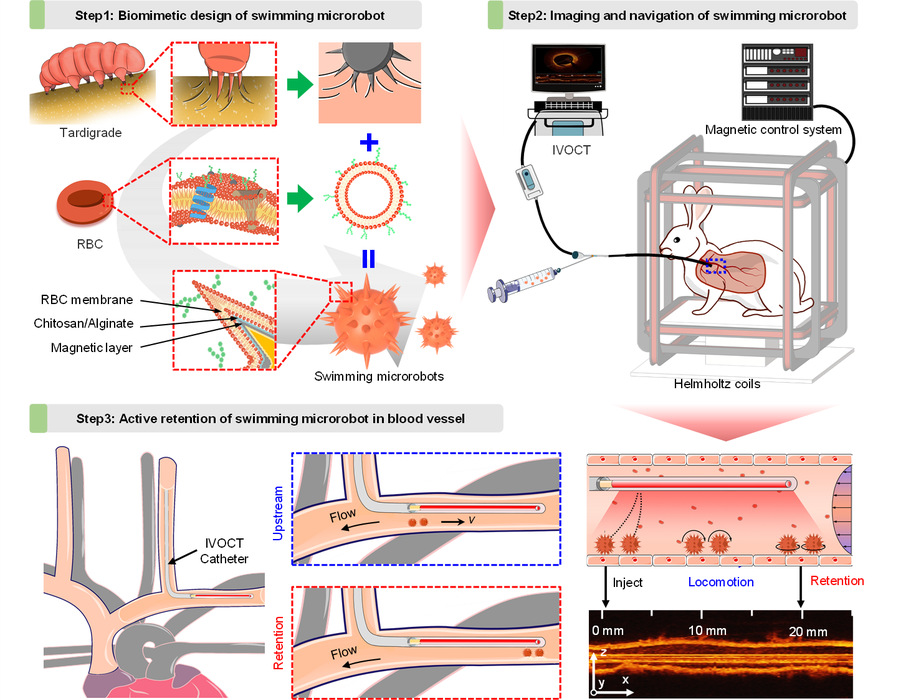
A scanning electron microscope image of the hydrated tardigrade. /CFP
A scanning electron microscope image of the hydrated tardigrade. /CFP
Chinese scientists have developed a swimming microrobot complete with claws and a coat that mimics the red blood cell membrane, significantly improving the efficiency of targeted drug delivery in blood vessels.
The magnetic robot is 20 microns in diameter and has claws inspired by tardigrades, a kind of tiny invertebrate. This allows for better navigation through the veins and shows promise for precision medicine, according to the paper published in the journal Science Advances.
Swimming microrobots offer promising possibilities for delivering drugs to body tissues that are hard to reach while addressing problems such as intensive blood flow and a limited ability to stick to the target sites in blood vessels.

The working mechanism of the clawed microrobot. /HIT
The working mechanism of the clawed microrobot. /HIT
Researchers from the Harbin Institute of Technology (HIT), in collaboration with their counterparts at the First Affiliated Hospital of Harbin Medical University, took inspiration from tardigrades, whose claws can grip plants in water, enabling them to survive in fast-flowing liquid.
The clawed microrobot has an outer layer disguised as a red blood cell membrane, which improves its adhesion to the inner wall of the vessels. The researchers monitored the robot's activity and dynamics in a rabbit vein and observed very effective magnetic propulsion even at a high flow rate, according to the paper.
The findings bring new insight into precision medicine, such as treating malignant tumors, by significantly improving the efficiency of targeted drug delivery, according to the HIT.
Source(s): Xinhua News Agency